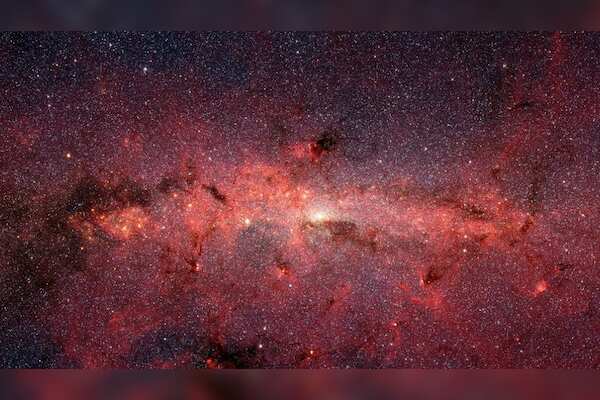Asteroids are a constant concern when they come close to our home planet, as even a small nudge from these high-speed space rocks can have disastrous consequences for Earth and all its inhabitants. The impact of an asteroid millions of years ago, which led to the extinction of the dinosaurs, serves as a stark reminder of the potential dangers posed by these celestial bodies. However, advancements in technology and monitoring capabilities have allowed space agencies like NASA to track and predict the trajectories of asteroids near Earth.
NASA recently announced that a bus-sized asteroid, designated as Asteroid 2023 XH7, is set to pass by Earth. According to NASA's Center for Near-Earth Object Studies (CNEOS), Asteroid 2023 XH7 will come within 940,148 kilometers of Earth. While this may seem like a significant distance, in the vast expanse of space, it is relatively close. The asteroid is hurtling through space at a speed of 71,276 kilometers per hour. Asteroid 2023 XH7 belongs to the Apollo group of Near-Earth Asteroids, which are asteroids that come in close proximity to Earth. This particular asteroid has made previous close approaches to Earth, with its first encounter occurring on July 5, 2020 when it passed by at a distance of 9. 7 million kilometers. It is scheduled to pass by Earth again on July 22, 2033, this time at a distance of 63 million kilometers. Despite its proximity to Earth, Asteroid 2023 XH7 does not pose a significant threat due to its relatively small size of 34 feet, comparable to the size of a bus. NASA classifies asteroids larger than 492 feet that come within 7.5 kilometers of Earth as 'Potentially Hazardous Objects'. The agency closely monitors potentially hazardous asteroids using a network of telescopes, including powerful instruments like the NEOWISE telescope, Pans-STARRS1, Catalina Sky Survey, and the Atacama Large Millimeter/submillimeter Array (ALMA). Overall, the tracking and monitoring of asteroids near Earth have significantly improved our understanding of these potentially dangerous celestial objects. While Asteroid 2023 XH7 may pass by without incident, continued efforts to track and study asteroids are crucial for protecting Earth from potential impacts in the future. In conclusion, the threat of asteroids remains a significant concern, but with advancements in technology and monitoring capabilities, space agencies like NASA are better equipped to track and predict the movements of these space rocks. By studying and monitoring asteroids near Earth, scientists can better understand the risks they pose and take proactive measures to protect our planet from potential impacts. The continued efforts of space agencies and researchers in this field are essential for ensuring the safety and wellbeing of Earth and all its inhabitants.Tracking and Monitoring Asteroids: NASA's Efforts to Protect Earth from Space Rocks
 9 months ago
20150
9 months ago
20150
Related
Witnessing the Lunar Show: A guide to watching August's supe...
1 month ago
2232
Insights from James Webb Space Telescope Resolve Debate on U...
1 month ago
1755
Commercialization of Women's Health: The Impact of Feminist ...
7 months ago
19811
Trending in United States of America
Popular
Nokia Reaches 5G Patent Agreement with Vivo After Lengthy Le...
7 months ago
26048
Apple's Upcoming Tablet Lineup: iPad Air to Introduce Two Si...
9 months ago
25976
Xiaomi's First Electric Car, the SU7 Sedan, Enters the EV Ma...
8 months ago
25364
The European Parliament's Bold Move to Combat Smartphone Add...
9 months ago
25312
Unveiling ChatGPT's New 'Memory' Feature Revolutionizing Use...
7 months ago
25212
© OriginSources 2024. All rights are reserved








 English (US)
English (US)